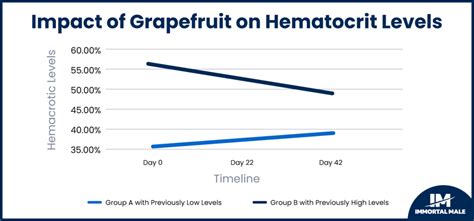Lowering Hematocrit: Key to TRT Success
Testosterone Replacement Therapy (TRT) can significantly improve the lives of men experiencing low testosterone, alleviating symptoms like fatigue, decreased libido, and muscle loss. However, a potential side effect of TRT is an increase in hematocrit, the percentage of red blood cells in your blood. Understanding how to manage this is crucial for ensuring the safe and effective success of your TRT journey. This article delves into the relationship between TRT and hematocrit, explaining why lowering elevated hematocrit is important and outlining strategies to manage it effectively.
What is Hematocrit and Why Does TRT Affect It?
Hematocrit is a vital blood measurement reflecting the proportion of red blood cells to the total blood volume. Testosterone stimulates erythropoiesis, the production of red blood cells. Therefore, TRT can lead to increased red blood cell production, resulting in elevated hematocrit. While a slightly elevated hematocrit might not be problematic, significantly high levels can increase the risk of serious health complications.
What are the Risks of High Hematocrit?
High hematocrit, also known as polycythemia, thickens the blood, making it harder for the heart to pump. This increased blood viscosity can lead to several adverse health effects, including:
- Blood clots: Increased blood thickness raises the risk of forming blood clots, which can lead to strokes, heart attacks, or pulmonary embolisms.
- Headaches and dizziness: The thickened blood can restrict blood flow to the brain, causing headaches and dizziness.
- High blood pressure: The heart works harder to pump thicker blood, leading to elevated blood pressure.
- Vision problems: Reduced blood flow to the eyes can impair vision.
- Heart failure: Over time, the strain on the heart from pumping thicker blood can contribute to heart failure.
How is High Hematocrit Detected and Treated?
Regular blood tests during TRT are essential to monitor hematocrit levels. If your hematocrit rises above the recommended range (typically around 50-54% for men), your doctor will likely adjust your TRT regimen or recommend additional interventions. Treatment options for high hematocrit include:
- Reducing the testosterone dose: Your doctor may lower the dosage of testosterone to reduce red blood cell production.
- Phlebotomy: This involves periodically removing a certain amount of blood to lower hematocrit levels. It's a common and relatively straightforward procedure.
- Hydration: Maintaining adequate hydration can help thin the blood and lower hematocrit levels. Drinking plenty of water is crucial.
What are the symptoms of high hematocrit?
H3: What are the symptoms of high hematocrit?
Symptoms of high hematocrit can vary depending on the severity of the elevation. Some individuals may experience no symptoms at all, while others may develop a range of signs, including:
- Headaches: Frequent or severe headaches can be a warning sign.
- Dizziness and lightheadedness: Feeling faint or dizzy, especially upon standing, may indicate high hematocrit.
- Fatigue and shortness of breath: The body struggles to receive adequate oxygen with thickened blood, leading to tiredness and breathlessness.
- Vision changes: Blurred vision or other visual disturbances can occur.
- Itching: Some individuals report intense itching, particularly after showering.
- Reddened face and hands: Increased blood volume can lead to facial and hand redness.
How often should my hematocrit be checked during TRT?
H3: How often should my hematocrit be checked during TRT?
The frequency of hematocrit monitoring during TRT depends on several factors, including your individual response to therapy and the presence of any risk factors. Generally, it's recommended to have your hematocrit checked at least every 3-6 months during TRT. Your doctor may advise more frequent testing if you have any pre-existing conditions or if your hematocrit levels are trending upward.
Can diet and exercise help lower my hematocrit?
H3: Can diet and exercise help lower my hematocrit?
While diet and exercise are essential for overall health, their direct impact on significantly lowering hematocrit is limited. A healthy lifestyle is vital for supporting cardiovascular health and managing blood pressure, but it won't directly address the increased red blood cell production caused by TRT. These lifestyle choices should be part of your overall health management strategy but won't replace medical intervention if your hematocrit becomes dangerously high.
Conclusion
Successfully managing TRT requires careful monitoring of hematocrit levels. While TRT offers significant benefits, understanding the risks of elevated hematocrit and proactively addressing it with your physician is paramount to ensuring the therapy remains safe and effective. Open communication with your doctor, regular blood tests, and prompt intervention are crucial for maintaining optimal health during TRT. Remember, this information is for educational purposes and does not constitute medical advice. Always consult your physician for personalized guidance on TRT and the management of your hematocrit levels.

